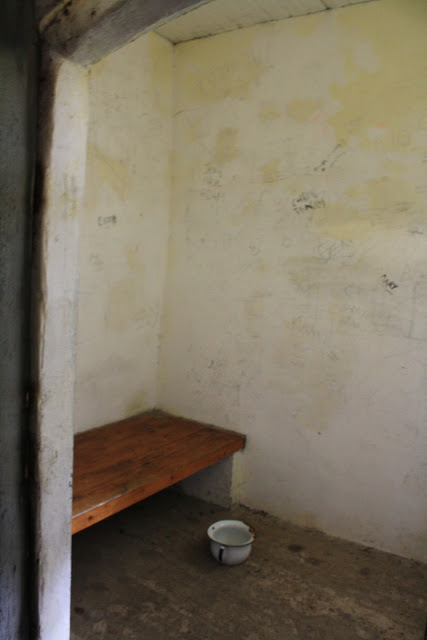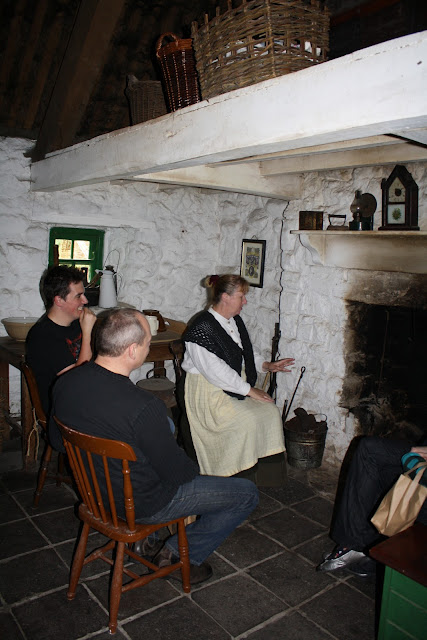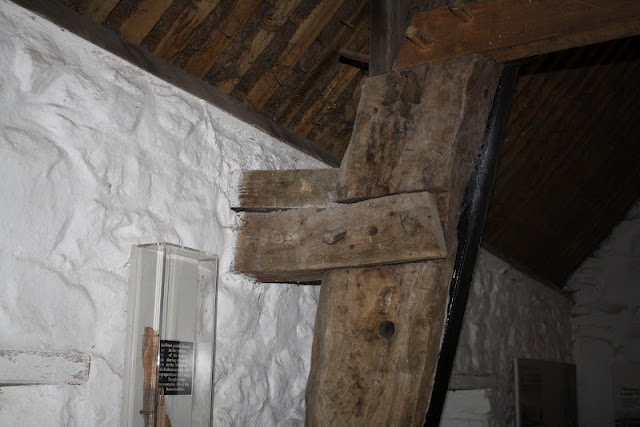Yes, there is still more to see and we only made it half way through the park, we will be going back and there will be still more to share. =)
"RIC Barracks - Royal Irish Constabulary
You’d better be on your best behaviour when you visit the RIC
barracks! The Royal Irish Constabulary (RIC) came out of the earlier
Constabulary Police Force of 1822 and dates from 1836, when the police
service of four provincial forces was unified under one central command.
The title ‘Royal’ was granted in 1867 and the Royal Irish Constabulary
continued as one body until the partition of Ireland in 1922, when it
was succeeded by the Garda Síochána and the Royal Ulster Constabulary.
Early police recruits had to be single and between 19 and 27 years of
age, had to be able to read and write and be of good moral character.
Policemen were expected to remain sober and attend church regularly; to
live in barracks, and to serve at least seven years before seeking
permission to marry. No policeman was allowed to serve in his native
county, or, if he married, in his wife's native county.
Although efforts were made to make the force reflect the population,
by 1860 some 70% of recruits were Catholic and 30% Protestant. By 1914
this had become 81% and 19% respectively. The police were well paid,
which made it an attractive career for many younger sons who could not
expect to inherit the family farm and would otherwise have had to
emigrate to find work.
Although they generally led a relatively quiet life, considerable
police time was spent suppressing the illegal distillation of alcohol
(poteen-making). After 1871, dealing with unlicensed dogs became a
priority. In the 1840s, Ireland had the highest level of rabies in
Europe, but thanks largely to the enforcement of dog licensing laws, and
dealing with strays, the disease was eradicated by 1901.
Original location: Castle Street (formerly Bow Lane), Antrim, County Antrim"
 |
| RIC Building |
 |
| a stil |
 |
| police officer with his bike |
 |
| kitchen of the RIC |
 |
| officers bedroom |
 |
| Samuel typing in the office |
 |
| cell |
Ballyvollen Houses
" In 1905, one of these houses was occupied by Hugh McGarry and his
wife Elizabeth. They had married in 1904. Hugh was a fisherman and
boat-builder, but he supplemented his income in summer by ferrying
picnic parties across the Lough to Rams Island.
The three houses are of great architectural interest because their roofs
are supported by 17th century oak cruck-trusses of an English type.
Built most probably in the second half of the 17th century, after the
widespread property damage during the failed 1641 Rebellion, the roof
timbers are representative of the building skills and techniques brought
into Ireland by English settlers.
The
houses were sited close to the highest navigable point on the Glenavy
River, which ran behind them into Lough Neagh. The river, well known
for salmon and trout, had at least one corn mill and a flock (textile)
mill along its short course.
The adjacent basket-maker's workshop has been built as part of the
complex to emphasise the importance of this craft along the southern and
eastern shores of Lough Neagh.
Original location: Ballyvollen, Crumlin, County Antrim"
 |
| thatching, straw tightly sewn together forms the roof of these houses |
 |
| Ballyvollen Houses |
 |
| fireplace |
 |
| bedroom with low ceilings |
 |
| inside frame work. |
 |
| inside wall construction |
 |
| frame work |
 |
| frame details |
 |
| hope this is big enough to read |
It was so dark in these houses they all had tiny little windows and only one or two per room. The building technique used was amazing to see. No nails only wood, straw and mud, yet here they stand today. In these homes they were burning peat not coal. It was interesting to see something that looked to be a two inch plug of dirt burn and create warmth.